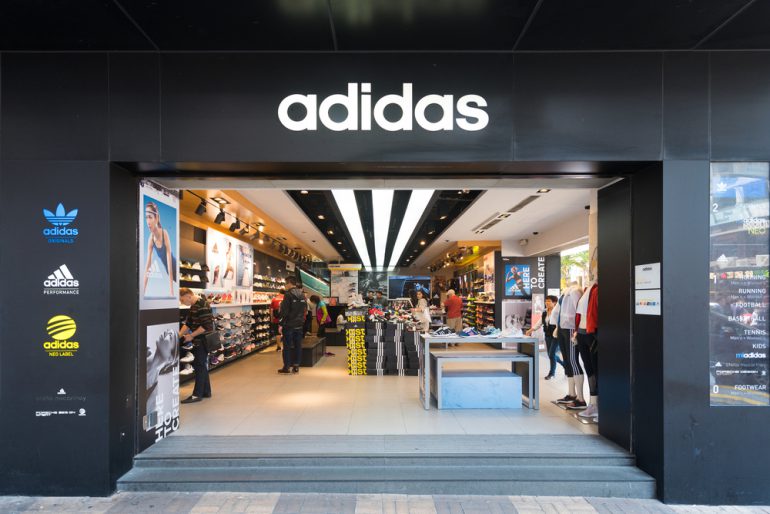Adidas revealed its first quarter revenue down by 19%, as Coronavirus causes standstill of majority of adidas’ business after good start to 2020.
SEE ALSO : Crocs announces 2020 first quarter financial report
“Our results for the first quarter speak to the serious challenges that the global outbreak of the coronavirus poses even for healthy companies,” said adidas CEO Kasper Rorsted.
The global spread of the coronavirus led to a significant number of store closures – both own- and partner-operated – and a pronounced traffic reduction within the remaining store fleet, with a corresponding negative impact on adidas’ top-line development.
Continued strong currency-neutral growth of 35% in e-commerce – the only channel that has remained fully operational in most parts of the world – could only partially offset the material revenue decline in the physical channels. As a result, the company’s currency-neutral revenues decreased 19% in the first quarter, reflecting a 20% sales decline at brand adidas, while Reebok sales were down 12%. In euro terms, revenues also decreased 19% to € 4.753 billion (US$5.145 billion) (2019: € 5.883 billion).
The significant revenue declines the company has been experiencing in Greater China since the end of January as well as in Japan and South Korea in March drove the combined currency-neutral sales of the adidas and Reebok brands in Asia-Pacific down by 45%.
This development was mainly driven by a sales decline of € 800 million (US$866 million) (-58%) in Greater China, which also reflects product takebacks in a triple-digit-million euro amount to manage inventory levels in the market. While stores in Greater China and South Korea reopened during March, closures came into effect in most other parts of the world following the rapid global spread of the coronavirus.
Up until this point, the company had recorded currency-neutral revenue growth of 8% outside of Asia-Pacific for the first two months of the year. The negative impacts from the subsequent closures offset these sales increases, thereby significantly weighing on the first quarter sales developments in Emerging Markets (-11%), Europe (-8%), Latin America (flat), North America (+1%) and – to a lesser extent – in Russia/CIS (+9%).
Adidas’s gross margin decreased 4.2 percentage points to 49.3% (2019: 53.6%). This development was mainly driven by a less favorable regional mix due to the overproportionate sales decline in Greater China, negative currency developments as well as costs related to the cancellation of purchase orders in order to adjust the inbound flow of inventories to the current circumstances.
Other operating expenses decreased 1% to € 2.305 billion (US$2.495 billion) (2019: € 2.317 billion) and, as a percentage of sales, increased 9.1 percentage points to 48.5% (2019: 39.4%).
The combined impact from the product takebacks in Greater China, the cancellation of purchase orders and the increase in bad debt allowances had a negative effect on the first quarter operating profit development in an amount of around € 250 million (US$270 million).
The company’s net income from continuing operations decreased 97% to € 20 million (US$21 million) (2019: € 631 million). As a result, basic EPS from continuing operations fell to € 0.13, a decline of 96% year-over-year (2019: € 3.17).
Average operating working capital as a percentage of sales increases only moderately. Inventories increased 32% to € 4.334 billion (US$6.691 billion) (March 31, 2019: € 3.285 billion) due to inevitably lower-than-expected product sell-through caused by the broad-based store closures.
On a currency-neutral basis, inventories were up 36%. The increase in inventories was partly offset by an 8% decline in accounts receivable (-5% currency-neutral) and a 23% increase in accounts payable (+25% currency-neutral). As a result, operating working capital increased 8% to € 4.635 billion (US$5.017 billion) (March 31, 2019: € 4.309 billion) and was up 12% on a currency-neutral basis. Average operating working capital as a percentage of sales increased 0.8 percentage points to 19.4% (March 31, 2019: 18.6%).
The company’s top line continued to sequentially recover in Greater China in the first three weeks of April, and global e-commerce revenues showed another significant acceleration from 55% currency-neutral growth recorded in March. However, adidas’ overall revenue development remains severely impacted by a significant number of store closures across Europe, North America, Latin America, Emerging Markets, Russia/CIS and large parts of Asia-Pacific. At this point in time, more than 70% of the company’s store fleet is still closed.
The company is making use of the flexibility in its operating cost base but largely refraining from measures that would jeopardize future prospects. Consequently, both top- and bottom-line declines in the second quarter of 2020 are currently expected to be more pronounced than those recorded in the first quarter, with currency-neutral sales projected to come in more than 40% below the prior year level and the operating result to be negative.
SEE ALSO : Hermès announces 2020 first quarter financial report
Kasper Rorsted said, “Despite the current situation, I am confident about the attractive long-term prospects this industry provides for adidas. Consumers are developing an increased appreciation of well-being. They want to stay fit and healthy through sports. Our focus on accelerating our own-retail and digital business will serve us even better in the future. We are well positioned as a global company with strong brands.”




